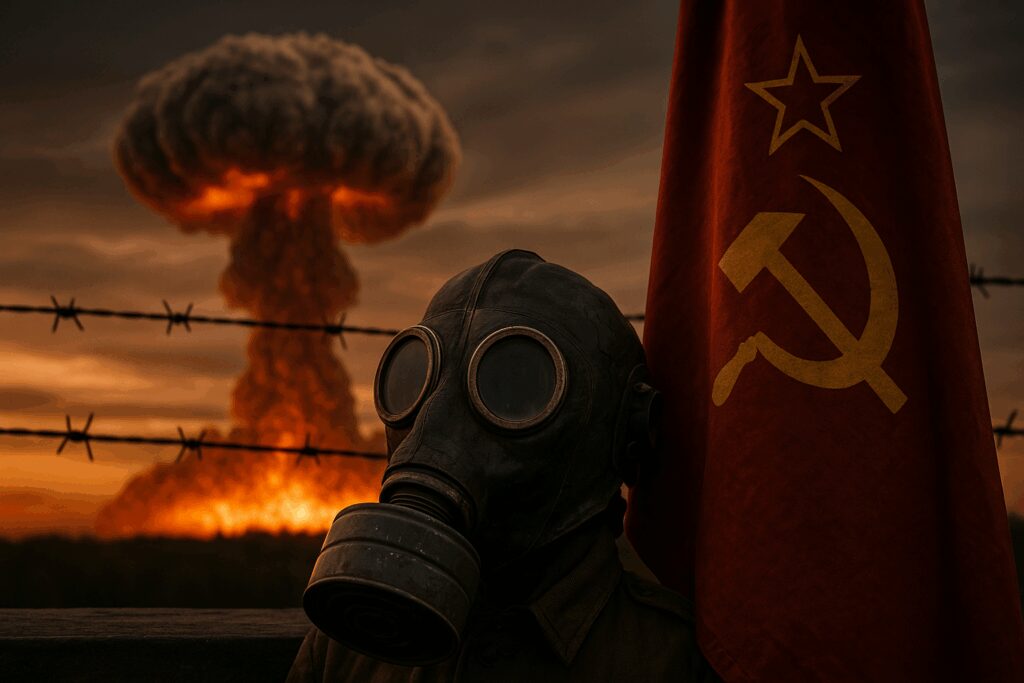A released Department of Defense document, obtained through the Freedom of Information Act,
provides a rare and candid look inside the Soviet leadership’s strategic mindset during the Cold War.
The 152-page file compiles firsthand interviews with senior Soviet military officials, policymakers, and Western counterparts, exposing a mix of overestimation, fear, and internal debate that shaped the era’s
arms race and nuclear brinkmanship.
Conducted primarily in the early 1990s, the interviews were part of a formal study by the Office of Net Assessment, drawing on the testimony of Soviet officers such as Marshal Sergei Akhromeev, General Andriian Danilevich, and Western figures including former U.S. Secretary of Defense Harold Brown.
The collection offers new insight into how both sides viewed nuclear deterrence,
the potential for war, and the logic behind massive arms buildups.
Soviet Doubts About Nuclear Warfighting
The document reveals that, by the 1970s, leading Soviet military thinkers had concluded that nuclear weapons were not true warfighting tools, but rather political instruments of deterrence. “At no time did the USSR ever intend to make first use of nuclear weapons,” Marshal Akhromeev told U.S. researchers, explaining that although a preemptive attack would offer an advantage in theory, neither side would actually win if nuclear war began. He described nuclear arms as “political tools,” and noted that both superpowers’ command and control systems for nuclear forces reached full reliability only in the
mid-1970s, greatly reducing the risk of unauthorized or accidental use.
General Danilevich described how the results of secret Soviet computer models, shown to Brezhnev
and other Politburo members in the early 1970s, predicted catastrophic devastation after a nuclear exchange. According to the unpublished findings, the Soviet armed forces would be “reduced to 1/1000 of their previous strength,” with 80 million Soviet citizens killed and 85% of industrial capacity destroyed. Danilevich recalled that Brezhnev was “visibly terrified” by the exercise and had to be reassured that it was not a real launch. The summary of this study was never published, as its message was judged “too psychologically detrimental to morale and resolve.” Instead, later models artificially reduced predicted destruction to make nuclear war appear less suicidal, a practice that continued into the 1980s.
Strategic Misperceptions and Internal Rivalries
The interviews point to a persistent pattern of misreading the other side’s intentions. Akhromeev, who was initially distrustful of the U.S., said that face-to-face meetings with American generals in the late 1980s changed his views, revealing that both sides had long misunderstood each other’s actual policies and motivations. “Each side made a tremendous misreading of the other side’s intentions, which led to a greater possibility of accidental strikes,” he said, but added that there was never an imminent danger of war in the 1970–87 period.
The document also details internal disputes within the Soviet leadership, especially between the General Staff, political authorities, and the powerful industrial sector. General Batenin recalled deep tensions between military planners and party leaders over decisions such as force structure and the production of new weapons, with disagreement over whether quantity or quality should be prioritized. The interviews highlight that subjective factors, political alliances, and personal relationships often overrode technical analysis in weapons procurement and strategy.
Economic Pressure and Arms Buildup
A recurring theme in the interviews is the immense economic burden of the Soviet arms race. Sergei Blagovolin, who worked on assessing the U.S. industrial mobilization potential, recalled that Soviet planners estimated the U.S. could produce “50 nuclear submarines and 50,000 tanks per year” in a mobilization scenario. These threat assessments were used for decades to justify vast increases in Soviet military spending and production, which ultimately contributed to the economic strains that weakened the USSR in the 1980s.
Chemical and New Weapons
On chemical weapons, both Soviet and U.S. interviewees agreed that the USSR maintained large stockpiles as a “secondary means” of warfare, to be used only if nuclear escalation could be avoided or in retaliation. Soviet planners consistently matched U.S. capabilities, but chemical weapons were viewed as fundamentally less decisive than nuclear arms.
There is also acknowledgment that both superpowers tracked and attempted to match technological innovations—such as cruise missiles, precision-guided munitions, and laser-based weapons—but economic and political realities limited their actual impact on the nuclear balance.
Political Leadership and Decision-Making
The interviews note the sometimes limited military experience of Soviet political leaders, with Brezhnev described as “very weak in the area of military decision making,” often leaving key decisions to the Minister of Defense and the General Staff. Final choices on weapons development and arms control frequently reflected a compromise between military advice, party priorities, and the interests of the defense industry.
Lasting Lessons
The released record offers a rare, unfiltered view of the late Cold War from the perspective of both Soviet and Western insiders. The testimony shows that, beneath the rhetoric and buildup, both sides recognized the catastrophic potential of nuclear war and relied on deterrence—not victory—as the true goal. The collection reveals how misperceptions, internal politics, and economic exhaustion shaped the course of the Cold War, and how close both superpowers came to the brink while ultimately avoiding direct conflict.
###
Document Archive
 The Crowded Path to Unlimited Soviet Arsenals: What Soviet Party Leaders, General Staff, and Industrialists Thought They Were Doing in the Cold War [153 Pages, 6.5MB]
The Crowded Path to Unlimited Soviet Arsenals: What Soviet Party Leaders, General Staff, and Industrialists Thought They Were Doing in the Cold War [153 Pages, 6.5MB]
 Loading...
Loading...Follow The Black Vault on Social Media:

